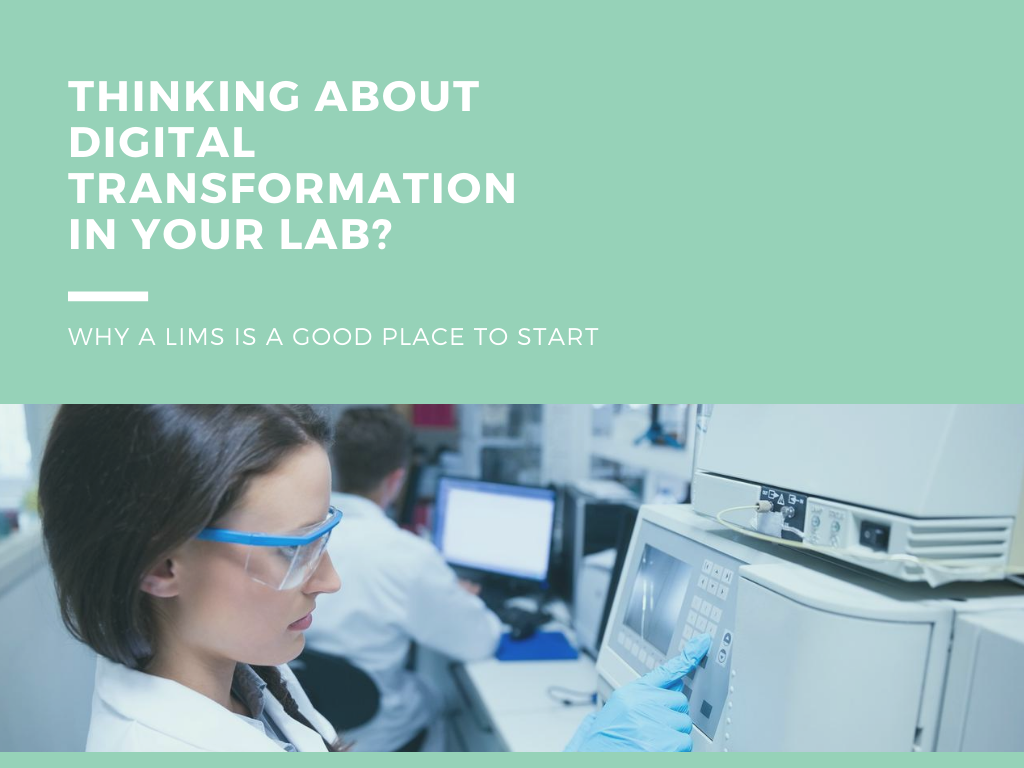Many of us are familiar with the term digital transformation or digitisation. But how many organisations that are looking at digitalising the lab are actually putting the needs of the scientists and researchers at the heart of their digital transformation strategy? After all, without their buy-in and adoption any new systems and processes you implement are unlikely to be successful. Or at least not as successful as you’d hoped. Change in any environment is unsettling. It also requires effort – and not just from those overseeing and driving the changes. So, when it comes to lab digitisation placing the emphasis on delivering improvements to empower scientists may help ease the introduction and adoption of new technologies, processes, and practices.
Understanding what to digitise
The first step on the digital transformation journey is to understand what you do and how you work. Importantly, this isn’t yet about how you’d like to work. Instead, this means watching and listening to those working in the lab.
Try to avoid digitising an ineffective process that could be improved by simply changing the process. Digitising inefficient processes doesn’t suddenly make them better. They’ll be just as bad, possibly worse. The only difference is you’ve spent a lot of time and money on the latest equipment and technologies.
Similarly, understanding which processes can’t, or shouldn’t, be digitised is key to ensuring you’re maximising resources as well as any potential benefits.
The next step is to identify your main objectives and what you want to achieve by digitising your lab. For example, are you looking to improve efficiency by minimising data duplication and manual data entry? Or do you want to increase sample throughput by automating lab processes and connecting lab systems?
Focus on what’s going to give you the most gains for the least pain. Documenting your goals will help you determine next actions as well as give you a benchmark for assessing the impact of changes.
Digitisation of lab and sample data management to deliver benefits and empower scientists
Digitising data collection and management is an important part of the transformation process. This might mean implementing a Laboratory Information Management System (LIMS) to standardise your lab and sample data.
But it’s important to recognise that scientists might perceive an increase in their workload as a result of implementing a LIMS. Whereas previously they may have been using a spreadsheet to enter data ad-hoc, now they have to enter data using forms with pre-defined options and formats. Plus, it may take longer to capture data because you’re asking them to record detailed information that you simply couldn’t previously.
Having said that, a LIMS can automatically populate data, such as auditing information or calculations based on pre-defined rules. Also, many LIMS have data import capabilities to eliminate the need to rekey data that’s already available electronically in spreadsheets.
As a result, time-savings and benefits may appear much later on in a process or in several different but related processes. For example, when searching for samples, analysing results and outcomes, checking sample viability, or supporting internal and external audits.
A LIMS empowers researchers and scientists by enabling them to quickly find the information they need when they need it. Without having to interrupt others or wait days to receive or dig through information.
Digitally connecting systems
One of the best ways to promote digital transformation in the lab is through digitally connecting systems. This might include automated data collection such as that generated by instruments, or remote access to equipment. All of which reduces administration overheads and duplication; allowing scientists to focus their efforts on accelerating scientific breakthroughs.
Automating the sending and receiving of information to instruments from anywhere – including outside the lab – not only helps drive efficiency but also improves data quality and integrity. What’s more, integrating with automated stores to cherry pick required samples means they’re ready and waiting for the scientists when they need them. No more rummaging through freezers.
Digital connectivity can encourage collaboration within labs as well as across multiple organisations. It can help to break down data silos and provide rich metadata about biospecimens and patients.
The future: AI and machine learning
We’re only beginning to understand the possibilities and benefits for these emerging technologies. They could transform labs and support scientists by spotting trends and patterns as well as carrying out time-consuming and complicated calculations. Add to this voice activated systems and augmented reality and you’re not only empowering your scientists but fundamentally transforming the way your lab operates.
AI and machine learning depend on quality data. This not only means you need to standardise and consistently format your data but also hold detailed associated metadata. As with everything, ensuring you identify how you want to use these technologies and your anticipated benefits helps stay focused.
Empowering scientists and researchers to embrace lab digitisation
Digitisation is fundamentally transforming all aspects of our lives and how organisations do business. The lab is no different. The right technologies implemented well can fundamentally change the way your lab operates. This can also include increasing productivity and helping drive and accelerate scientific discoveries. But for lab digitisation to be successful and actively embraced by scientists and researchers they need to understand how and where it’s going to support them. Only by using these technologies to empower scientists can they focus on what matters to them – and us.


Comments are closed.